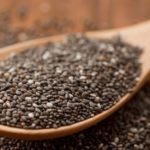Bitter melon and its wild variant have distinct benefits and uses, ranging from culinary to medicinal purposes. This article aims to help you differentiate between the two types of bitter melon so that you can choose the right ingredient for your needs.
1 What is Wild Bitter Melon?
 Wild Bitter Melon
Wild Bitter Melon
Wild bitter melon, also known as wild balsam pear, is a vine belonging to the gourd family that grows wild on hills and mountainsides. It is native to tropical regions such as China, East Africa, India, Central America, South America, and Vietnam.
Characteristics: Wild bitter melon has very small fruits, about the size of a finger or, at most, a thumb. The skin is dark green, turning yellow when ripe. The fruit is slightly round and covered with small, sharp spines.
Flavor: Wild bitter melon has a distinctively bitter taste, more intense than that of regular bitter melon, and a delightful aroma.
 Benefits of Wild Bitter Melon
Benefits of Wild Bitter Melon
Nutritional Value: Bitter melon, including the wild variety, is packed with essential nutrients such as vitamins B1, B2, B3, B9, C, E, and A, as well as calcium, iron, magnesium, phosphorus, potassium, zinc, and dietary fiber. It offers numerous health benefits:
Medicinal Uses: In traditional East Asian medicine, wild bitter melon is believed to have a bitter taste, a cold nature, and detoxifying properties. It is used to dispel phlegm, relieve coughs, and clear heat from the body.
Lowering High Blood Pressure: The compound charantin in wild bitter melon helps regulate blood pressure and prevent atherosclerosis.
Diabetes Management: Bitter melon contains substances that help lower blood glucose levels and stabilize blood sugar.
 Treating Prickly Heat in Children
Treating Prickly Heat in Children
Treating Prickly Heat: Wild bitter melon has detoxifying and cooling properties. Boiling the fruit and using the water for bathing can help reduce prickly heat symptoms in children.
Gout Treatment: Wild bitter melon helps reduce uric acid levels in the body, thereby preventing gout.
Weight Loss: With its low-calorie and high-fiber content, wild bitter melon helps induce a feeling of fullness and reduce cravings. It also boosts the body’s calorie-burning process, aiding in weight loss.
Additionally, wild bitter melon is used to support the treatment of various conditions, including digestive disorders, constipation, high blood pressure, kidney stones, fever, and liver diseases. It is also used for cooking and food preparation.
Culinary Uses: Wild bitter melon can be prepared in numerous delicious ways, including boiling, stir-frying with beef or eggs, braising with pepper, stuffing with meat, and slicing thinly for hot pot.
2 Active Compounds in Wild Bitter Melon
Alternative Name: Wild bitter melon is also known as wild bitter gourd. It is an edible fruit belonging to the gourd family. Research has identified charantin, momordicin, alkaloids, and triterpenes as the primary active compounds in wild bitter melon.
 Active Compounds in Wild Bitter Melon
Active Compounds in Wild Bitter Melon
Additionally, wild bitter melon contains other compounds such as vitamin C, dietary fiber, and various minerals.
3 What Diseases Can Wild Bitter Melon Treat?
Here are some traditional medicinal uses of wild bitter melon that have been evaluated and deemed safe and effective by experienced practitioners:
 Diseases Treated by Wild Bitter Melon
Diseases Treated by Wild Bitter Melon
Supporting Diabetes Treatment
To use wild bitter melon for diabetes management, prepare about 10g of dried wild bitter melon and boil it with 1 liter of water. When the water reduces to about 600ml, turn off the heat and divide the concoction into three portions to be consumed throughout the day.
After meals, you can also eat fresh wild bitter melon to help control blood sugar levels. Continue this regimen until your blood glucose stabilizes.
Treating Prickly Heat
Prepare about 10g of wild bitter melon leaves and vines and boil them with 2 liters of water. Mix the boiled water with cold water and use it for bathing to relieve prickly heat symptoms.
Treating Cough and Sore Throat
Wild bitter melon is also effective in treating coughs and sore throats. For this purpose, collect 2g of mature wild bitter melon seeds and chew them until they release their juice. Swallow the juice and discard the seed husks.
4 What is Regular Bitter Melon?
 What is Regular Bitter Melon?
What is Regular Bitter Melon?
Regular bitter melon is a cultivated variety derived from wild bitter melon. It is also a vine belonging to the gourd family, but it is typically grown in home gardens rather than found growing wild like its wild counterpart.
Characteristics: Regular bitter melon has larger fruits, measuring 8-15cm in length. The spines have evolved into small ridges, and the skin is lighter green in color compared to wild bitter melon.
Flavor: Regular bitter melon has a milder bitterness and a less intense aroma than wild bitter melon.
In terms of nutritional content and benefits, regular bitter melon is similar to wild bitter melon, but it contains slightly lower levels of certain nutrients. For example, regular bitter melon has 22mg of vitamin C, 1.1g of dietary fiber, and 0.9g of protein, while wild bitter melon contains 84mg of vitamin C, 2.8g of dietary fiber, and 1g of protein.
 Stuffed Bitter Melon
Stuffed Bitter Melon
Culinary Uses: Regular bitter melon can be used in dishes such as bitter melon stuffed with pork, stir-fried with shrimp, and more.
5 Which is Better: Wild or Regular Bitter Melon?
Wild bitter melon is generally considered superior to regular bitter melon due to its natural growth environment. Growing wild, it absorbs all the nutrients and energy from nature, resulting in a higher nutritional content than its cultivated counterpart.
 Comparing Wild and Regular Bitter Melon
Comparing Wild and Regular Bitter Melon
In addition to high levels of vitamins C, A, E, B1, B2, B3, B9, and minerals like potassium, calcium, zinc, magnesium, phosphorus, and iron, wild bitter melon contains high levels of antioxidants that help combat free radicals in the body.
Traditional East Asian medicine has long recognized wild bitter melon as a valuable medicinal herb with numerous health benefits. Depending on your needs, you can use the leaves, flowers, or fruits of the wild bitter melon plant.
6 How to Cook Wild Bitter Melon
Wild Bitter Melon and Beef Soup
Try this delicious and nutritious soup made with wild bitter melon and beef. It’s a great way to make your family meals more exciting and healthy!
 Wild Bitter Melon and Beef Soup
Wild Bitter Melon and Beef Soup
Wild Bitter Melon Stir-fried with Pork
Wild bitter melon stir-fried with pork is another excellent addition to your daily menu. The sweet and tender pork combines beautifully with the bitter melon’s distinctive bitterness, resulting in a flavorful and nourishing dish that is also suitable for people with diabetes.
 Wild Bitter Melon Stir-fried with Pork
Wild Bitter Melon Stir-fried with Pork
Wild Bitter Melon Pickled in Sweet and Sour Sauce
Wild bitter melon can also be pickled in a sweet and sour sauce to make a tasty and easy-to-prepare dish. It goes well with fish or meat stews and can be added to salads for a unique flavor and texture.
 Wild Bitter Melon Pickled in Sweet and Sour Sauce
Wild Bitter Melon Pickled in Sweet and Sour Sauce
7 Who Should Use Wild Bitter Melon?
The use of wild bitter melon as a therapeutic agent is especially beneficial for the following groups:
- People with cancer or tumors
- Individuals suffering from prickly heat or boils
- Those with chronic constipation
- People with high levels of toxins in their bodies, leading to liver and kidney damage
- Individuals with unstable blood pressure
 Who Should Use Wild Bitter Melon?
Who Should Use Wild Bitter Melon?
8 Precautions When Using Wild Bitter Melon
Pregnant women should exercise caution before consuming wild bitter melon, as it may induce miscarriage and negatively affect breast milk and newborn health.
Postpartum women should also refrain from using wild bitter melon, as their bodies are particularly sensitive during this period. Wild bitter melon may cause adverse effects such as abdominal pain, headaches, and even coma in sensitive individuals.
For those with weak digestive systems, consuming wild bitter melon may lead to stomach ailments and diarrhea.
People with chronically low blood pressure or blood sugar levels should also avoid excessive consumption of wild bitter melon, as it may cause further drops in blood pressure, leading to dizziness, headaches, or even coma.
When using wild bitter melon for medicinal purposes, patience is key as the effectiveness of the treatment may vary depending on individual body constitutions.
If you intend to use wild bitter melon for children, consult a healthcare professional or pediatrician for guidance.
 Precautions When Using Wild Bitter Melon
Precautions When Using Wild Bitter Melon
9 Medicinal Recipes Using Wild Bitter Melon
According to the







































